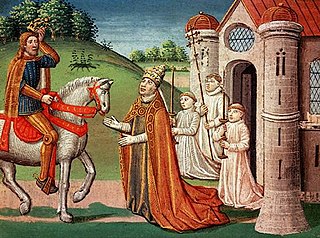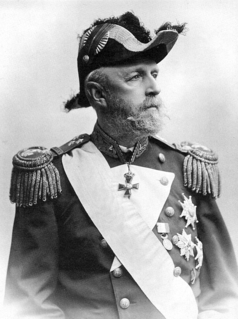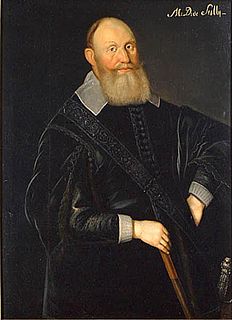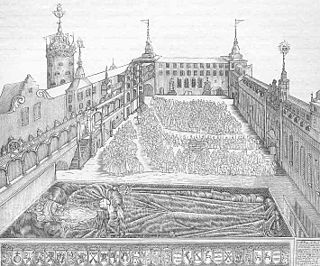Duke Charles may refer to:
| | This disambiguation page lists articles associated with the title Duke Charles. If an internal link led you here, you may wish to change the link to point directly to the intended article. |
Duke Charles may refer to:
| | This disambiguation page lists articles associated with the title Duke Charles. If an internal link led you here, you may wish to change the link to point directly to the intended article. |

The House of Wittelsbach is a German-Bavarian dynasty, with branches that rule, or have ruled over territories including: Bavaria, Holland, Zeeland, Cologne, Sweden, Romania, Bohemia, Hungary, Denmark, Norway, Greece and the Holy Roman Empire. The House of Windsor, the reigning royal house of the British throne, are descendants of Sophia of Hanover, a Wittelsbach Princess and Electress of Hanover.

Charles is a masculine given name predominantly found in English and French speaking countries. It is from the French form Charles of a Germanic name Karl. The original Anglo-Saxon was Ċearl or Ċeorl, as the name of King Cearl of Mercia, that disappeared after the Norman conquest of England.

Charles IX, also Carl, was King of Sweden from 1604 until his death. He was the youngest son of King Gustav I and his second wife, Margaret Leijonhufvud, brother of Eric XIV and John III, and uncle of Sigismund who was king of both Sweden and Poland. By his father's will he got, by way of appanage, the Duchy of Södermanland, which included the provinces of Närke and Värmland; but he did not come into actual possession of them till after the fall of Eric and the succession to the throne of John in 1568.

Gustav IV Adolf or Gustav IV Adolph was King of Sweden from 1792 until he in 1809 was deposed in a coup. He was also the last Swedish monarch to be the ruler of Finland.

Oscar II was King of Sweden from 1872 until his death, and King of Norway from 1872 to 1905.

Charles XIII, or Carl XIII,, was King of Sweden from 1809 and King of Norway from 1814 to his death. He was the second son of King Adolf Frederick of Sweden and Louisa Ulrika of Prussia, sister of Frederick the Great.

John III was King of Sweden from 1569 until his death. He was the son of King Gustav I of Sweden and his second wife Margaret Leijonhufvud. He was also, quite autonomously, the ruler of Finland, as Duke John from 1556 to 1563. In 1581 he assumed also the title Grand Prince of Finland. He attained the Swedish throne after a rebellion against his half-brother Eric XIV. He is mainly remembered for his attempts to close the gap between the newly established Lutheran Church of Sweden and the Catholic church.

The House of Bernadotte is the royal house of Sweden, since its foundation in 1818. It was also the royal house of Norway between 1818 and 1905. Its founder Charles XIV John of Sweden, was born in Pau in southern France as Jean Bernadotte. Bernadotte, who had been made a brigadier general for his service in the French Royal Army during the French Revolution, was adopted by the elderly King Charles XIII of Sweden, who had no other heir and whose Holstein-Gottorp branch of the House of Oldenburg thus was soon to be extinct on the Swedish throne.

Christian I was a Scandinavian monarch under the Kalmar Union. He was king of Denmark (1448–1481), Norway (1450–1481) and Sweden (1457–1464). From 1460 to 1481, he was also duke of Schleswig and count of Holstein. He was the first king of the House of Oldenburg.
Charles II may refer to:

Charles Edward, Duke of Saxe-Coburg and Gotha was the last reigning duke of Saxe-Coburg and Gotha from 30 July 1900 until 1918. A male-line grandson of Queen Victoria and Prince Albert, he was also until 1919 a Prince of the United Kingdom and from birth held the British titles of Duke of Albany, Earl of Clarence and Baron Arklow.

Holstein-Gottorp or Schleswig-Holstein-Gottorp is the historiographical name, as well as contemporary shorthand name, for the parts of the duchies of Schleswig and Holstein, also known as Ducal Holstein, that were ruled by the dukes of Schleswig-Holstein-Gottorp. Other parts of the duchies were ruled by the kings of Denmark.

The Battle of Stångebro, or the Battle of Linköping, took place at Linköping, Sweden, on 25 September 1598 (O.S.) and effectively ended the personal union between Sweden and the Polish–Lithuanian Commonwealth, that had existed since 1592. In the battle, an army of c. 8, 000–12,000 commanded by Duke Charles defeated a mixed force of c. 5,000–8,000 consisting of an invading army of mercenaries in the king's employ and diverse but poorly co-ordinated supporting Swedish noblemen's forces commanded by King of both Sweden and the Polish–Lithuanian Commonwealth Sigismund III Vasa, who was acting to maintain and restore his personal union against anti-Catholic forces in Lutheran Sweden. The Swedish king's general Constantin fought at the western bridge.

The war against Sigismund was a war between Duke Charles, later King Charles IX and Sigismund, King of Sweden and Poland. Lasting from 1598 to 1599, it is also called the War of Deposition against Sigismund, since the focus of the conflict was the attempt to depose the latter from the throne of Sweden. The war eventually resulted in the deposition of Sigismund, with Duke Charles taking over the government and later also acceding to the throne.

Charles Frederick, Duke of Schleswig-Holstein-Gottorp was a Prince of Sweden and Duke of Schleswig-Holstein-Gottorp and an important member of European royalty. His dynasty, the Dukes of Schleswig-Holstein-Gottorp, were a cadet branch of the ancient House of Oldenburg, which at that time was ruling Denmark. His mother was a sister of Charles XII of Sweden. Charles Frederick married a daughter of Peter the Great and became the father of the future Peter III of Russia. As such, he is the progenitor of the Russian imperial house of Holstein-Gottorp-Romanov and the patrilineal ancestor of all Russian emperors starting with Peter III, except for Catherine II.

John of Sweden, Duke of Östergötland was a Swedish royal dynast. He was titular Duke of Finland 1590–1606 and reigning Duke of Östergötland 1606–18.

Events from the year 1574 in Sweden

Events from the year 1592 in Sweden

Events from the year 1598 in Sweden.
Events from the year 1599 in Sweden